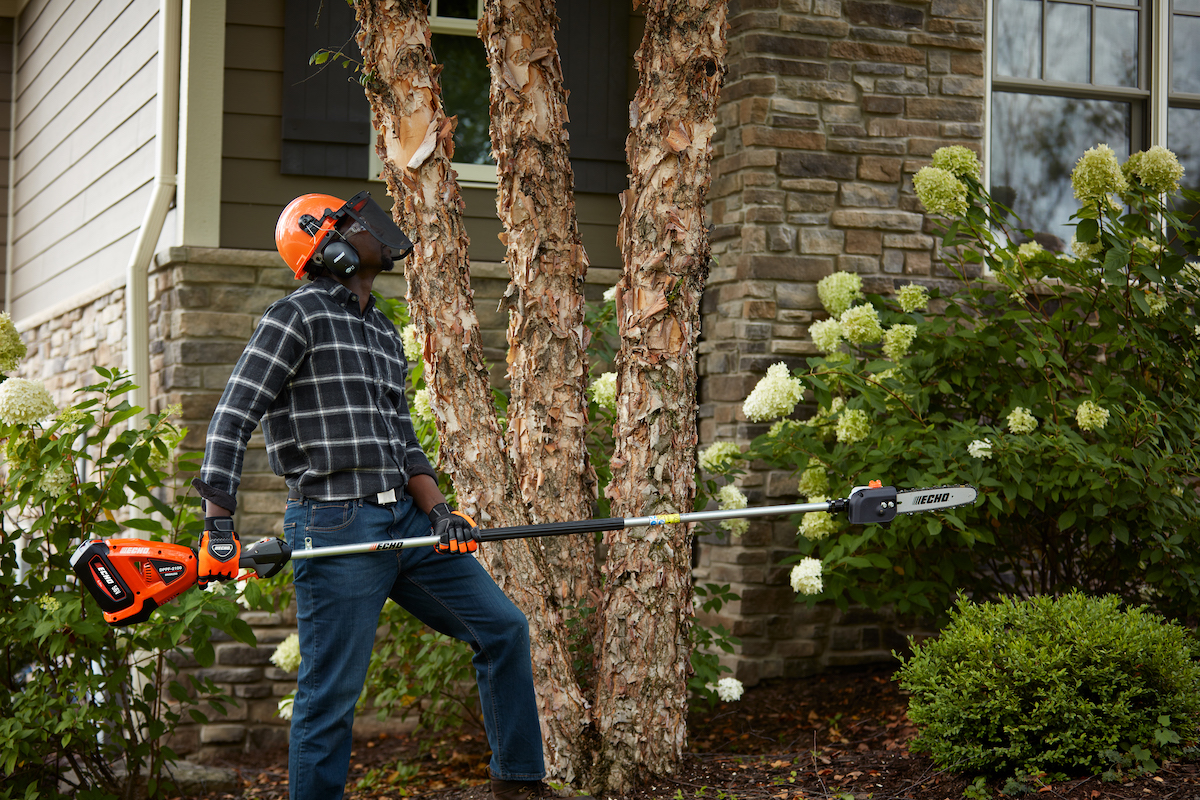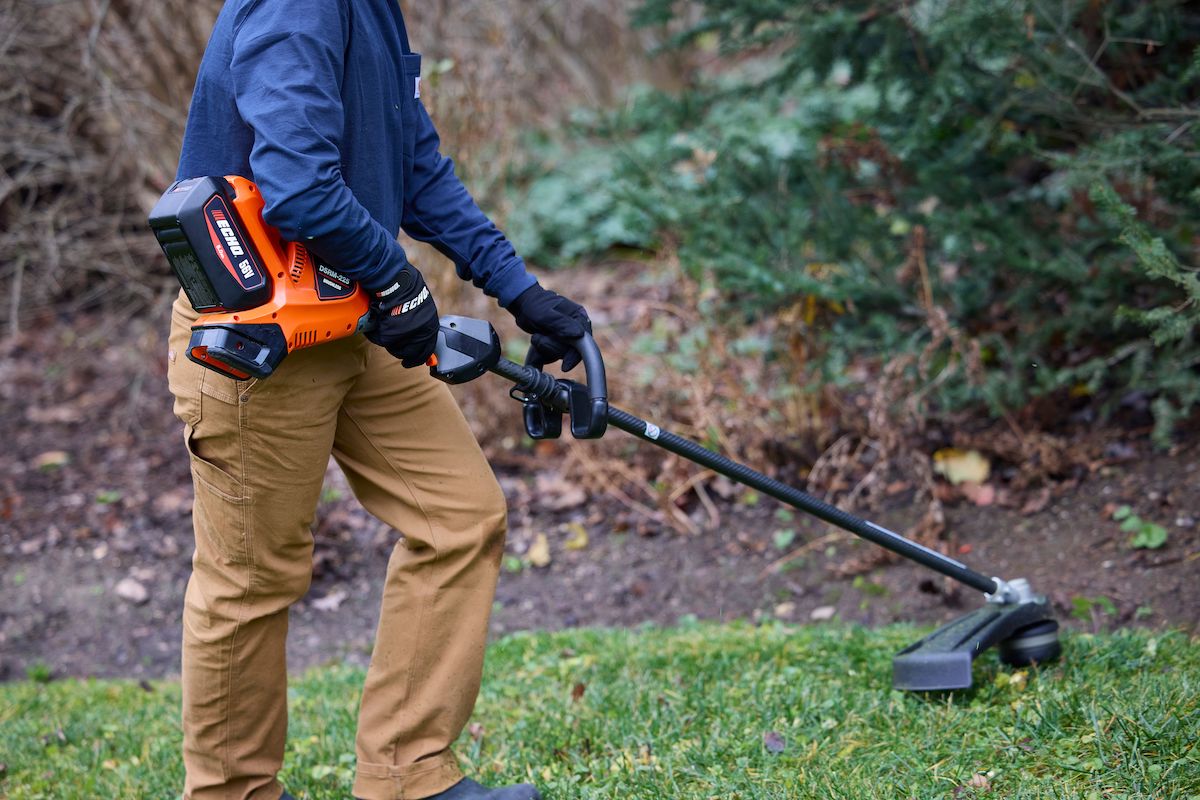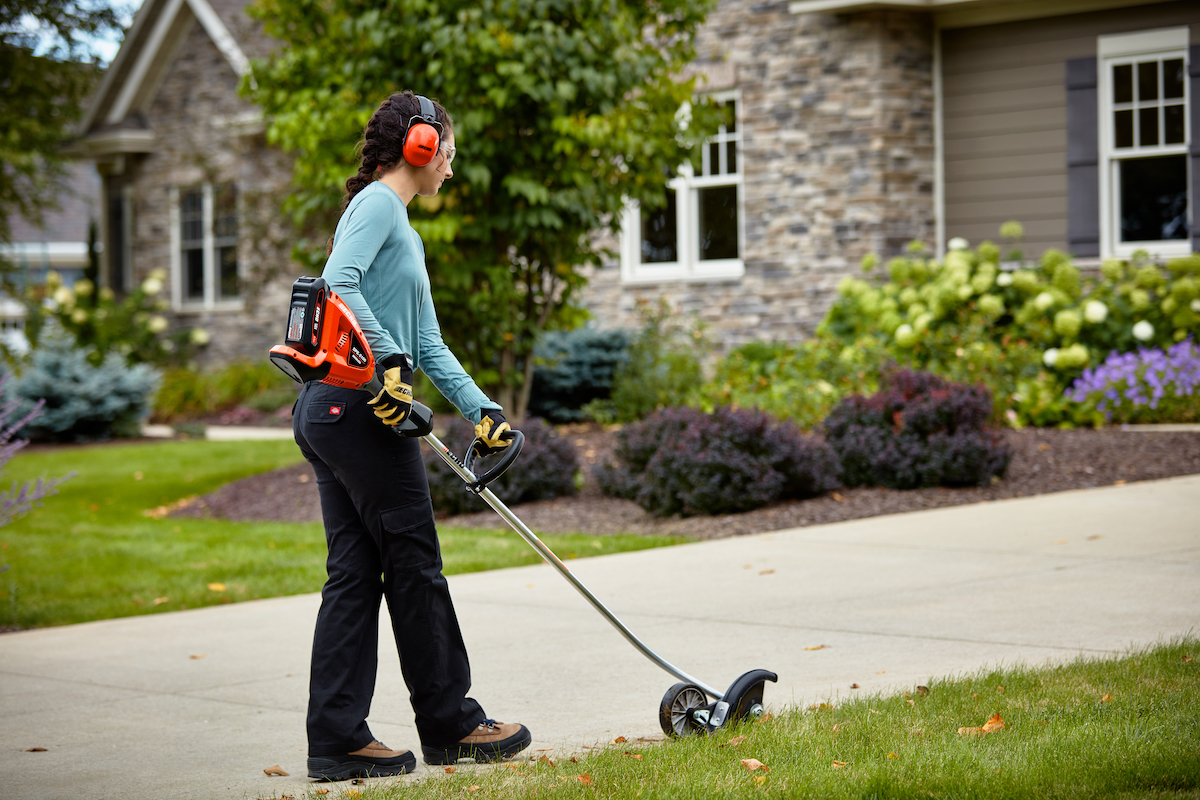Spring is almost here! This means getting outdoors to prune trees, trim hedges, and prepare the lawn. Let’s take an inventory of what tools and equipment can make yard work and cleanup easier this season—and get the job done.
For expert advice, we’ve partnered with our longtime friends at ECHO Incorporated, who have been manufacturing outdoor power equipment in the USA for over 40 years.
1. Pruning Trees
The best time for pruning trees runs from late winter to early spring. This allows fresh wounds to seal as new growth emerges. If your area has experienced heavy winds, ice storms, or heavy snow, there may be branch breakage or tree damage. Prune to remove broken or damaged limbs, as well as to encourage good growth patterns and improve air circulation.
Here’s a pro tip: Limb trees (remove the lowest branches) to allow light to reach your lawn and garden. When trees are young, establish a dominant leader and remove any branches that cross or rub it, a condition that can lead to damaged limbs and areas of disease.
Equipment to use:
- Tree Pruner: If you’re a homeowner, you can safely trim branches above your head with your feet safely on the ground by using an extendable pruner. For example, the ECHO Battery System Power Pruner® has a 12-foot reach and a 3-foot extension for smooth, efficient cutting up to 15 feet high. Or, use an even longer 20-foot extended Power Pruner® for high performance. Easy limbing of tree branches—with your feet on the ground!

- Chainsaw: If you’re taking down small trees or cutting up fallen ones, you’ll need a chainsaw. For homeowners, the ECHO Battery System chainsaw is an ultra-lightweight workhorse with a powerful performance equal to that of a gasoline chainsaw. This compact saw is easy to maneuver in tight spaces and has economical handles for comfort and precision.

Here’s a pro tip: Never use a chainsaw to reach above your shoulders, and do not attempt to prune near electrical and utility wires. Always use safety glasses, gloves, and protective chaps and cut away from your body. For big jobs, contact an arborist or tree service in your area for a consultation.
2. Trimming Hedges and Bushes
If you have hedges or bushes, regular maintenance is important both aesthetically and ecologically, as these plants soak up groundwater, provide windbreaks, soften noise pollution, and provide a habitat for wildlife. While you could trim with hand shears, hedge trimmers make the job much easier and quicker and provide uniform cutting.
Here’s a pro tip: Deciduous hedges and shrubs without flowers are trimmed and sculpted in late winter and early spring before seasonal growth begins. If you’re trimming flowering bushes, when you trim depends on when the bush flowers. Spring-blooming shrubs are pruned immediately after flowering. Summer-flowering shrubs are pruned in late winter and spring before new growth begins.
Equipment to use: For homeowners, it’s important to use a lightweight, compact hedge trimmer that’s also powerful. We heartily recommend the new range of ECHO Battery System hedge trimmers as the lightest in their class. The double-sided hedge trimmers are maneuverable, compact, and have rotatable handles; battery power means lower noise and vibration, zero emissions, and lower running costs. There are also single-sided hedge trimmers designed more for straight hedge rows.

3. Mowing the Lawn
Your lawn is where the family will enjoy a lot of quality time. Think of it as your private sanctuary. The first step is to get the mower ready. Clean beneath the mower deck to ensure that it’s clear of all debris and leaves. Replace or sharpen the mower blade.
Here’s a pro tip: Set your mower for the right height. Do NOT mow too short, or you’ll have more weeds, diseases, and problems. The height recommendations are 1½ to 2½ inches for warm-season grasses and 3 to 3½ inches for cool-season ones. Also, mow grass when it is dry, and don’t bag your clippings, as they return needed nutrients to the soil.
Equipment to use: If you need a new mower, consider switching to the modern battery-powered mower. Today, you can find more powerful mowers, such as the ECHO mower below, which has a 56V battery system that cuts for more than an hour on one charge. It’s self-propelled, lightweight, easy to maneuver, super quiet, and easy to handle compared to a gas mower. Plus, you’ll avoid messy fluid changes and annual maintenance. Learn more about battery-operated mowers.

4. Trim Hard-to-Reach Areas
If you invest in one lawn tool, the string trimmer is our favorite. String trimmers (also known as weed whackers or weed eaters) are used for difficult spots such as around trees and shrubs, walkways and patios, and children’s play equipment after you mow. Trimming isn’t just about looking pretty; it prevents weeds and grass from growing out of control.
Here’s a pro tip: Trimmers are often misused, and the lawn gets chopped up or scalped. Hold your trimmer at 90 degrees to the ground (not angled); also, hold it a few inches off the ground and use an even, side-to-side motion. Make sure that you wear safety glasses at all times.
Equipment to use: In residential areas, you need a powerful string trimmer that can cut weeds and high grass down to size for hours on end, with the quiet and convenience of batteries.

5. Edging Your Yard and Garden
Edging can be done in the spring to create a clean edge between your lawn and driveways, patios, walkways, and sidewalks to prevent growth from creeping in. Also, you can use an edger to redefine your garden beds or mulched areas for crisp and defined lines.
This ECHO Battery System lawn edger is a lightweight and easy-to-maneuver tool that uses the quiet and convenience of battery power to edge quickly and cleanly. It has commercial-grade components, helping you to perform a professional-quality landscaping job.
With an edger, you can give your property that professional look—without hiring a landscaper.

6. Clean Up Winter Sand and Debris
There will undoubtedly be leftover leaves, pinecones, and small debris from the winter scattered around your property. Make sure to remove this detritus early so that it does not affect grass growth.
Your driveway and walkways will also need continual TLC to deal with leftover winter sand and post-mowing grass clippings. Also, take time in the spring to clean up near the street or sidewalk in front of your house or any debris if you live along a busy road.
Equipment: A handheld blower makes spring cleanup fast and quickly clears your driveway. This new battery-powered blower has a powerful blowing force (549 CFM at 158 MPH), but it’s quiet. It’s ideal for use in locations that restrict gas-powered blowers. For those who like a backpack (us!) and a bit more horsepower, the backpack blower is perfect for homeowners.

The Benefits of Battery Power
Are you investing in new outdoor equipment this year? We’re big fans of battery power for many reasons. If you’ve been waiting for battery power to match the same power of gasoline, the newest models accomplish this goal!
ECHO Battery System models all work off a 56-volt lithium-ion battery, which contains 2.8 times more cells than the competition’s.

In addition, ECHO Battery System tools are lightweight, compact, and easy to maneuver for the homeowner’s comfort. Plus, battery power means that it’s easy to turn on. There is no need for tune-ups or annual maintenance. No mixing of gas and oil. There is no annoyingly loud racket all the time in residential areas. Less dependence on gasoline. Easy storage with no oil or gas. All that you need to do is simply slip in the battery and get to work.
Importantly, all of the models run off the same 56V batteries. You don’t have to invest in tools with separate power systems! Take a look at the full range of ECHO Battery System products.

We hope that the yard tool and equipment checklist from The Old Farmer’s Almanac editors and ECHO experts have provided some useful information as you get ready for the season!



















Comments